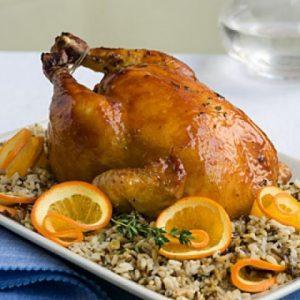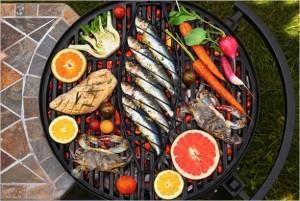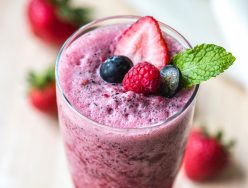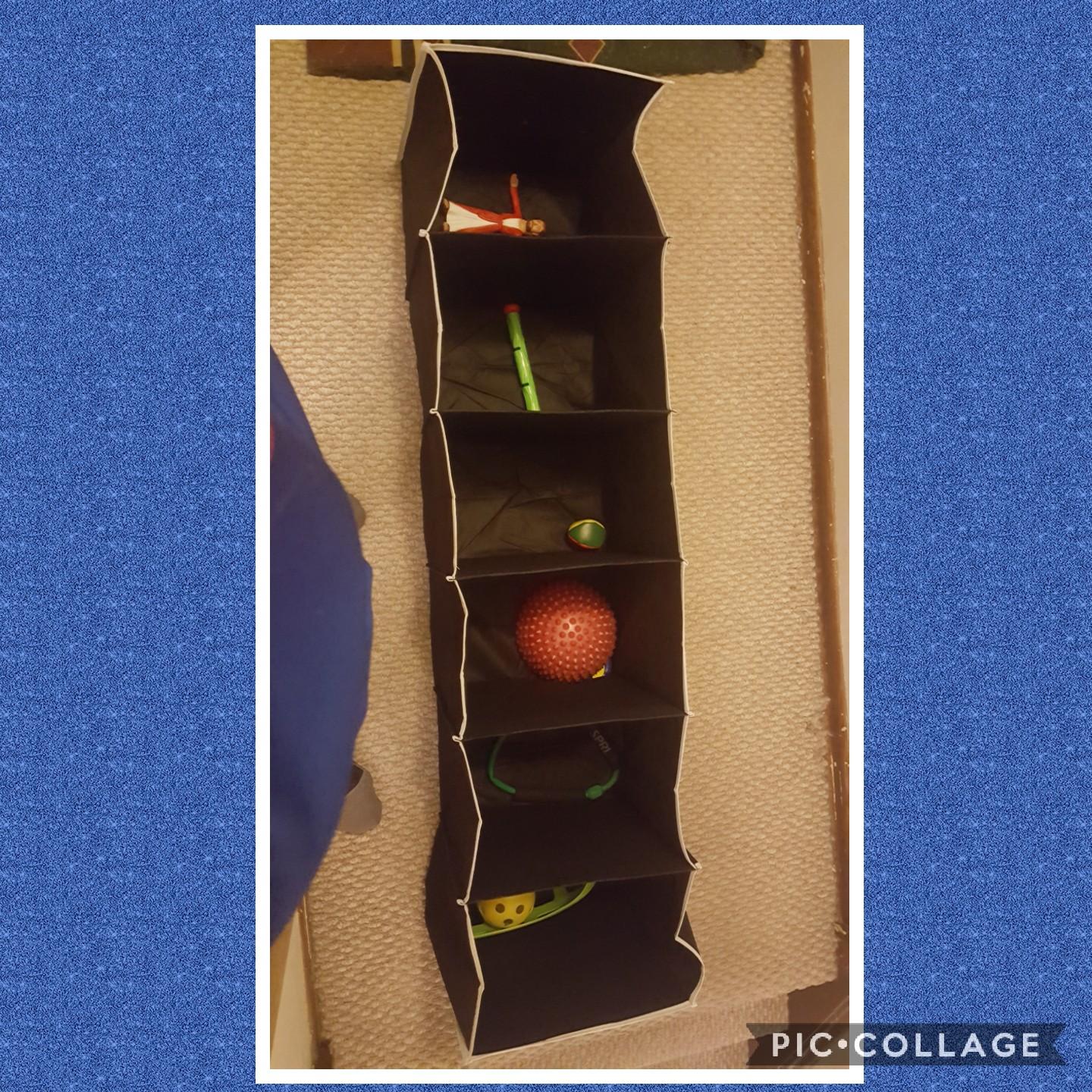
This part of the series covers various types of poultry, not just chicken, as well as what they lay — eggs. All too often, people limit their fare to the point where what they eat is so boring that they either become compulsive, binge, or give up altogether. There is more to life than boiled, skinless chicken breast.That said, allow me contradict myself immediately by saying that every fitness foodie’s freezer should contain a large bag of flash-frozen boneless, skinless chicken breasts! As long as you know how to prepare them properly, they’re easy, quick and delicious, but don’t limit yourself. Live a little and enjoy Nature’s bounty.
Chicken – Since we’re on the subject, let’s start with the most common form of poultry in the United States. Like beef, there are several different varieties, such as capons (a castrated rooster – the same idea as a steer), roasters (usually large), fryers (the most common) and stewing hens (old layers used for making soup). Because of the demand, you can purchase either a whole chicken; what’s often termed “best of fryer” which leaves out the bonier parts; or only one part, such as drummettes, which are often prepared with a hot sauce for messy, albeit delicious, appetizers.
The chicken most of us eat is raised by large growers and prepared in mechanized slaughter houses. Even though most plants adhere to sanitary procedures, sheer numbers dictate that consumers be extremely careful when handling raw chicken (or poultry of any kind) due to the increased incidence of salmonella.
Salmonella has always been with us and is carried by birds of all kinds and even reptiles, such as desert tortoises. The human digestive system can tolerate it somewhat, but a bad case can make you ill for days and really derail your workouts, not to mention your life in general. It’s not worth taking a chance. Therefore, all cutting boards, knives, drainboard surfaces and especially your hands, MUST be thoroughly washed with hot water and soap after preparation.
A former billboard put up by the California Avocado Growers says it all: “Licking a cutting board does not count as washing it.”
Eggs are just as problematic in this respect. Therefore they, and any meat from any poultry source, including game, needs to be cooked since heat destroys salmonella bacteria. Old time trainees used to swallow whole eggs or mix them into milk for a tasty egg nog. Don’t do it!
You may have heard a lot of folk wax poetic about the wonderful taste of free-range chicken because the birds roam around naturally and are not fed any hormones. Although this may be true, the flavor of the meat depends on where the chickens wander and what they eat.
Free-range chicken that tastes better than store-bought means the cluckers have been under someone’s watchful eye, roaming around in a fenced pen, or possibly turned loose with a human guard near by. If not, chickens are very susceptible to predators, including feral cats and packs of dogs. The story of midnight raids on chicken coops has been heard by everyone. If you’re a farmer, then you’ve probably experienced it first hand, racing out in the middle of the night with your trusty .22 to the sound of sqawking as some predator stalks your brood. Even eggs aren’t safe as a snake can literally slither up a wall.
Left to their lonesome, chickens will eat all kinds of things, so the “Sheppard’s” duties would include keeping them away from an alfalfa patch or from picking seeds and grubs out of cattle dung. The flavor of this sort of meat is exactly why a lot of people can’t stand the taste of the fare their hunter hobbyists bring home.
Turkey – Even leaner than chicken is the Native American range runner, the turkey. Like chicken, turkey producers have discovered a large market for breast meat and ground product. Be careful of ground turkey, however, if you don’t want to eat the dark meat which contains more fat. Be sure the package is labeled “ground turkey BREAST,” not simply “ground turkey.”
Turkey is now being used in items that traditionally used pork in order to reduce the fat. Unfortunately most of these offerings disappoint because they lack the right taste (what we’re used to) and enough fat content to make them flavorful. The way around this is to season properly and add a bit of essential fatty acid oil over the top.
Duckling – If you’ve never eaten roasted duck, you’re in for a treat. Ducklings are often found in the frozen section of the supermarket during the winter holiday season. They are not the best choice for the dieter due to their high fat content, but my, are they tasty! Duck is often the poultry of choice in traditional Chinese cooking. If you live in a large city with a Chinese district, you’ve seen the “Peking” variety, dyed red, hanging in the markets.
Cornish Game Hen – These little birdies are a domesticated form of quail. Quail is delicious but there’s often not much on them. Cornish Game Hens solve that problem because they have been bread to have more meat. They’re easy to roast or barbeque and make a nice change from chicken.
General Cooking Tip
For fat phobics, the best rule of thumb is to discard the skin and any obvious fat before preparing fowl. The white meat has less fat than the dark, and although all critters have some intramuscular fat, birds don’t have as much as mammals. Because of this, if the meat is not prepared properly, it can be dry and tough.
Fun With The Oven
 Ovens of one type or another have been assisting humankind with food preparation for centuries. We moderns would be the envy of our ancestors because we simply turn a little dial and – poof! – the heat is ON.
Ovens of one type or another have been assisting humankind with food preparation for centuries. We moderns would be the envy of our ancestors because we simply turn a little dial and – poof! – the heat is ON.
Poultry can be marvelous oven fare if done properly because roasting keeps the meat moist and the cook doesn’t have to keep an eye on the pot.
To roast any whole bird, all you need to do is wash it with cold water both inside the cavity and out, cut off any obvious fat and place it breast-side up in a roasting pan that has a cover that does not make contact with the breast. Add about one cup of chicken broth or water, one chopped onion, two chopped celery stalks, and one chopped carrot (this combination is what’s known in gourmet circles as “aromatic vegetables”). Sprinkle with salt, pepper and some garlic powder. Put the lid on the pan and roast in a 325-degree F. oven for ½ hour per pound.
Some people like to put a chicken on a rack inside a roasting pan, although it’s not necessary. It comes in very handy if you want to use the drippings to make gravy, or you simply wish to toss them out because they do contain melted fat.
There are quite a lot of nice variations on the roasting theme that are limited only by your creativity (or lack thereof). I recommend discarding the skin and underlying fat after the bird is cooked, or chopping it up for your dog or cat. However, if you wish to eat the skin, remove the cover for the last 15 minutes of baking time so that the bird will brown nicely.
You may prefer to substitute white wine for chicken broth, or possibly use one half cup of each. Various vinegars or fruit juices will also add interesting flavors. Lemon-chicken is an old favorite. You can use lemon juice, lemon slices, some white pepper, garlic and a bit of dill for a delicious flavor treat. Revisit the Seasoned Oils part of this series and use the ingredients minus the oils. The Barbeque sauce is wonderful used this way.
The only exception to the above directions is when cooking duckling. Leave it uncovered for the entire cooking time, which is usually about one to one and a half hours. Duckling has a much thicker fat layer than other types of poultry and is self-basting.
I find that duckling is better eaten with the skin removed because of the heavy fat layer, or you can scrape the fat off the skin. If you do so, very finely chop the roasted skin and sprinkle it over vegetables or a salad.
Years ago, cooks would remove raw skin from poultry, chop it up and cook it over high heat in a frying pan to render the fat, which they then used to flavor other dishes. What remained was called “cracklings,” a treat for whoever happened to be hanging about at the time.
If you wish to roast a pre-cut bird or parts, place your selection in a foil lined, rectangular pan with approximately 2-inch high edges. Cover with a foil “tent” so that steam can escape. If the meat is fresh or thawed, bake it at 325 degrees F. for at least a half hour, or until the juices run clear when the thickest part of the bird is poked with a fork. Wings will take less cooking time than halves, for instance.
Frozen chicken breasts can be placed in a single layer in a pan and roasted at 375 degrees for 50 minutes without any cover. When they’re done, either refrigerate or freeze them for future use. Cooked in this manner, they are ideal for use in stir-fry recipes or chopped up for salad. I even use them to make quick soup on a cold day.
DOWN AND DIRTY CHICKEN SOUP*
In a wok, place:
• 1, 14-oz can of chicken broth
• 1 tsp black pepper
• 1 tablespoon of garlic flavored olive oil (see Part 10)
Bring to a boil, then add
• 1/2 cup of macaroni or other similar sized dry pasta
Reduce heat to a low boil. While pasta is cooking, chop up
• 1 pre-cooked skinless, boneless chicken breast
• 1 stalk of celery or a small baby bok choy
• 1 small onion
When pasta is just to the al dente stage, add the chicken, celery, onion and about a cup of shredded carrots. If all the broth has evaporated, add about ½ cup of water. Cook for about 3 minutes until the chicken is hot. Turn off the heat and throw in 1-2 cups of shredded cabbage or spinach. Stir to distribute throughout the soup and serve. Yield: 2 servings
SUPERB CHICKEN SALAD*
Approximately 4 cups of cooked cubed chicken or turkey
1 head of very thinly sliced romaine lettuce
2 cups of bean sprouts
1 red onion, chopped fine
1 cup blanched slivered almonds, cashew or peanut pieces
¼ cup sesame seeds
1, 8 ounce can of water chestnuts, well drained
½ cup Caesar olive oil (See part 10 of this series)
4 Tablespoons of natural rice vinegar
1-2 teaspoons of salt (to your taste)
In a large bowl, combine the chicken, lettuce, bean sprouts and onion. Set aside.
In a sauce pan, heat the oil until quite hot; add nuts, sesame seeds and water chestnuts. Simmer for 2 minutes. Turn off heat and stir in vinegar and salt and blend well. Pour over chicken mixture, toss quickly and serve immediately.
For a variation on the above, you could substitute spinach for the lettuce and walnuts for the almonds. Omit the water chestnuts and sesame seeds and use bacon bits and hard boiled eggs. Yum!
Serves 4.
*Any kind of poultry can be used; these recipes are ideal for leftovers.
On The Grill
 Poultry is also delicious cooked on the barbeque grill; it can be roasted whole using a spit. Follow the directions that come with your particular barbeque. Whole turkeys cooked on Webber Kettles are the best I’ve ever eaten. Kettle cooking is great for hot climates because your oven doesn’t heat up the house.
Poultry is also delicious cooked on the barbeque grill; it can be roasted whole using a spit. Follow the directions that come with your particular barbeque. Whole turkeys cooked on Webber Kettles are the best I’ve ever eaten. Kettle cooking is great for hot climates because your oven doesn’t heat up the house.
Another great way to cook Cornish Hen or small chickens is “a la crapudine.” This doesn’t sound so great in English, but it means “like a frog” in French.
Using a sharp, fairly decent sized knife or poultry shears, cut through the back bone and any other skin or meat so that the bird will lie flat. Tuck the ends of the wings underneath the top. Cut a slit in the breast and bend the leg backward so you can tuck the end of it into this slot. With chicken it may be necessary to tie the bird with string.
Baste the top of the hen or chicken with some seasoned olive oil (the type of seasoning is up to you), and grill over open coals until the juices run clear when the breast meat is cut slightly.
If you don’t want to go to all that trouble, you can barbeque chicken parts, although this works best when the skin is left on. Both outdoor barbequing and oven broiling can dry poultry; the skin will prevent this. If you don’t want to eat it, remove it before serving.
In The Wok
Poultry meat of any kind is ideal for wok cooking. One of the reasons is because it has a fairly mild flavor. This makes it versatile as far as blending well with many different seasonings.
I’ve been over this before, so I’ll make this brief. If you’ve done some prep and have pre-cooked chicken breast on hand, or if you have leftovers from a roasted bird, chop up the meat and throw it in a wok with some greens. Revisit the Vegetables part of this series for wok cooking times and which varieties work best.
If you only have a little bit of meat left, then chop it up along with some onion, a zucchini, green peppers or whatever cooks fast. “Fry it up in a pan” and dump a couple of beaten eggs over the top of it for a mock “fu yung.” Cook until done, drizzle on some EFA oil and a bit of parmesan and you’ve got dinner. Now what could be easier than that?
Was this Article Helpful?
If this article was helpful to you, please consider linking this article to your own blog or sharing this through the social buttons below. You will also find other great articles at “Nutrition“.
- 4shares
- 4Facebook
- 0Twitter
- 0Pinterest
- 0LinkedIn
FPO Team
Latest posts by FPO Team
- Fitness Professional Insider | July 12 - July 2, 2016
- FPO Subscriber Deal #5 - February 8, 2016
- FPO Subscriber Deal #4 - February 8, 2016


















